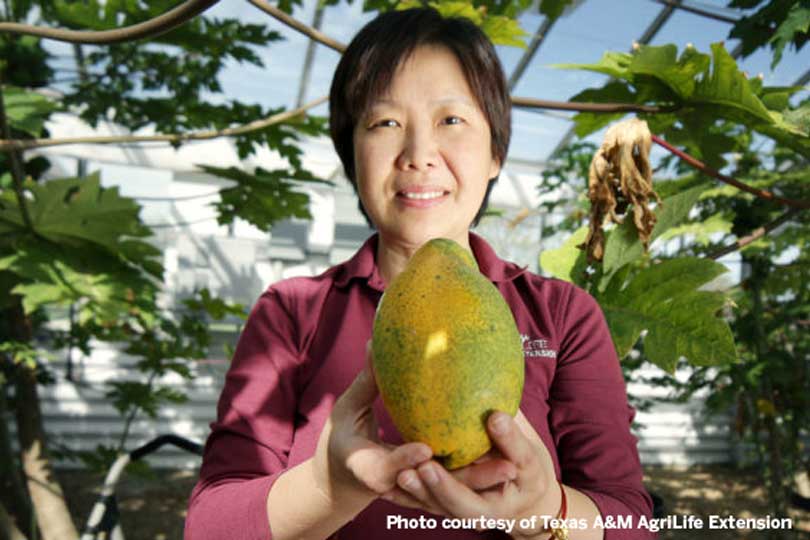By Justin Walker
Communications Specialist
A joint effort between two universities could lead to better papaya production, according to AgriLife Today.
Researchers from Texas A&M AgriLife Research in Dallas and the University of Illinois Urbana-Champaign discovered a gene within the papaya tree that dictates sex determination before seed germination.
Papaya trees have three potential sexes, Dr. Qingyi Yu, associate professor of genomics with Texas A&M AgriLife Research and member of the collaborate research team, said. Male trees produce pollen only and females can only grow fruit with a male nearby.
Hermaphrodite trees, however, have the ability to both produce pollen and grow fruit more efficiently, Yu said.
Today, growers must plant five seeds to ensure one hermaphrodite tree, she said. The gene Yu and her research team identified may be the key to reducing the planting and production costs.
Before 2004, the only way to identify a papaya tree’s sex was by letting it grow until its buds could be visually examined, which could take up to six months. That year, Yu’s lab released a molecular tool that would help determine the sex when the tree is only a seedling.
“But the tool is relatively expensive, and crop farmers still prefer to buy seeds over more-expensive seedlings,” Yu said.
Developing seeds predetermined to grow into hermaphrodite trees and minimize overall costs to grow papaya is the goal for Yu and her team.
Doing so would be a game-changer for the crop, because it could open up the possibilities of indoor papaya tree growth, Yu said.
“Controlled growing space is still so expensive that a first step to profitable papaya indoors would have to be guarantee production,” she said. “We’re working on that.”

